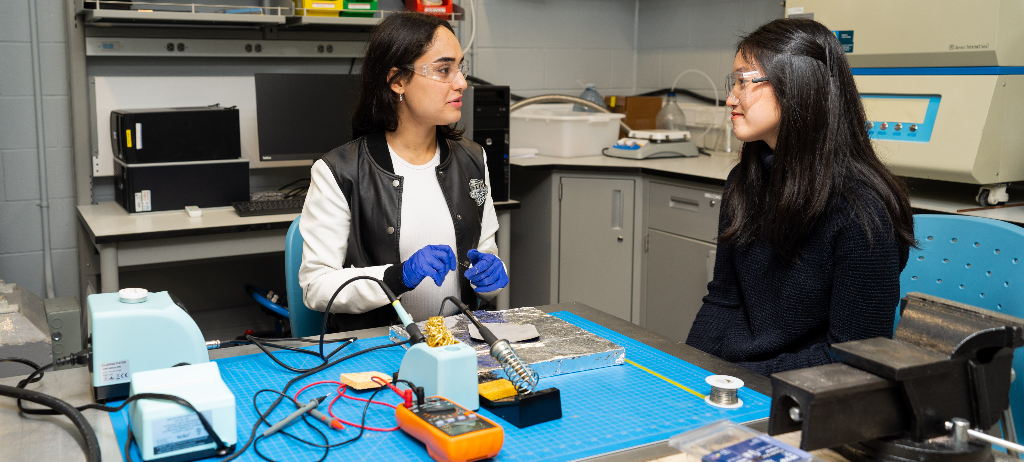
Pictured here: York University science and engineering students in the lab.
Systemic change sound approach to STEM access for women, underrepresented youth
By Elaine Smith
Jane Goodyer, Dean of the Lassonde School of Engineering at York University, is eager to bring about systemic change through equal educational opportunities in Science, Technology, Engineering and Mathematics (STEM) for women and other underrepresented youth worldwide.
“I’ve championed women in STEM throughout my career,” Goodyer said. “It has been front of mind. It’s about equal access to education globally and I’m doing the best I can to influence it.”
Goodyer first realized the need for a systemic solution while running a national STEM outreach program in New Zealand. She realized that young people’s futures were “often serendipitous,” she said. It drove home the importance of creating a system in education that allowed youth to pursue their interests.
“It’s not only about gender, although that is a part of it; it’s about equal access to education globally.”
At Lassonde, the k2i (kindergarten to industry) academy, Goodyer is achieving her goals. The k2i academy focuses on working with various school boards in Ontario to connect directly with classrooms, offering innovative work-integrated learning programs, and partnering with community organizations to provide unique, hands-on STEM learning opportunities to underrepresented students, including women.
The Bringing STEM to Life: Work-Integrated Learning exposes girls and/or underrepresented groups to STEM fields to awaken their interest and model the kinds of careers that are possible. Its has absorbed its forerunner, the Helen Carswell STEAM (STEM plus Arts), and provided young women and marginalized students with a chance to solve real-world problems in meaningful paid work experiences while earning a high school credit. This creates opportunities for empowerment and equal opportunities.
Through the program’s roll-out, partnering school boards focused on recruitment from Toronto’s Jane and Finch area — a highly-racialized neighbourhood. The goal was to centre outreach to students who otherwise might not have had exposure to STEM fields.
Of the student participants, 7 per cent were newly arrived Canadians, 33 per cent had no immediate family member who had graduated from university, and 87 per cent identified as being part of a visible minority or racialized group.
Today, the program has been expanded to include Black and Indigenous youth, also adding in other school boards. Since 2020, the k2i programming has reached over 6,000 high school students in Ontario, with over 175,000 hours of in-person or virtual learning, enabling youth to develop an interest in STEM, and helping them consider STEM career pathways.
In summer 2023, Lassonde delivered k2i programming through school boards in Toronto, suburban Peel and York regions. “We’ve designed the program to get the best from young people,” said Goodyer.

















